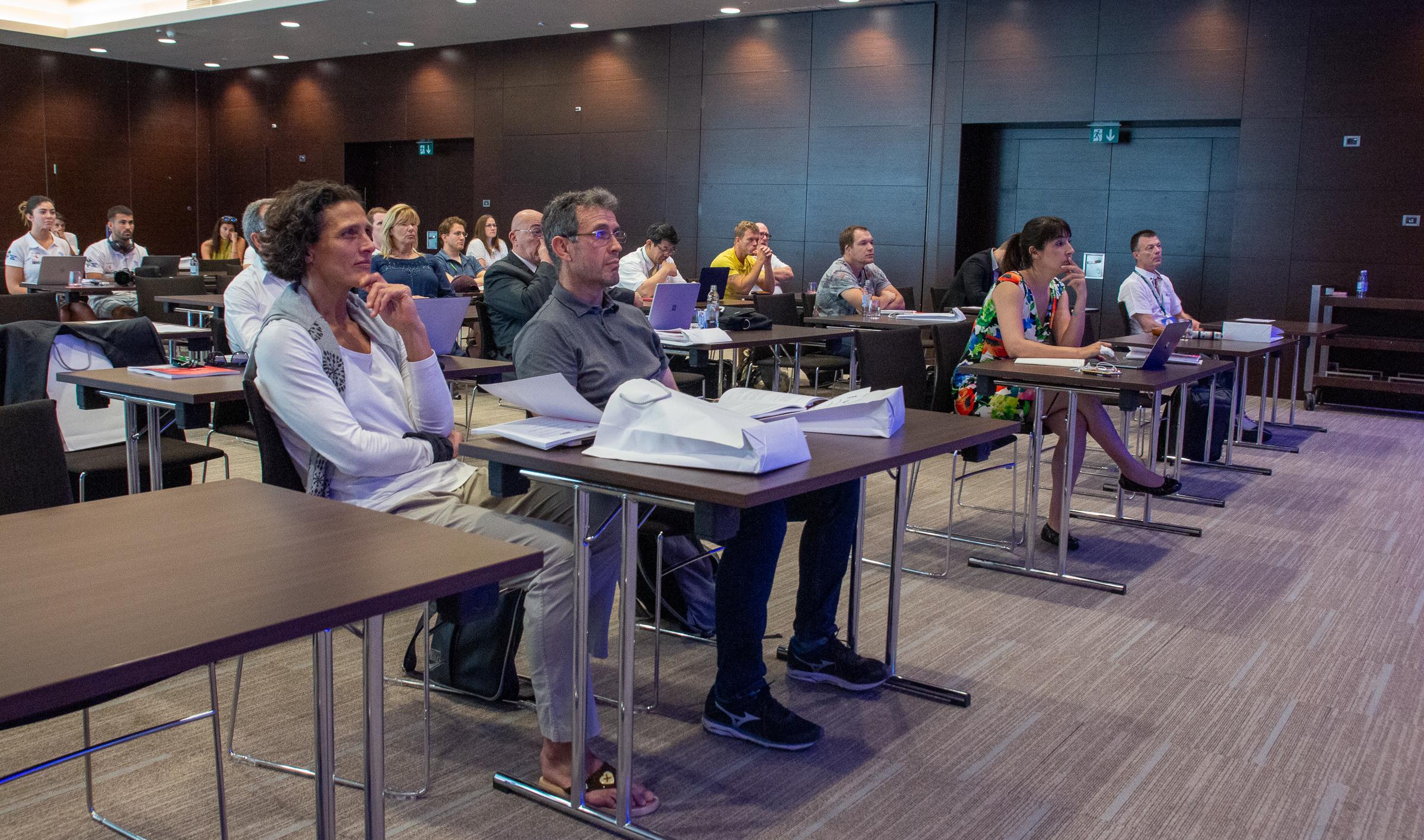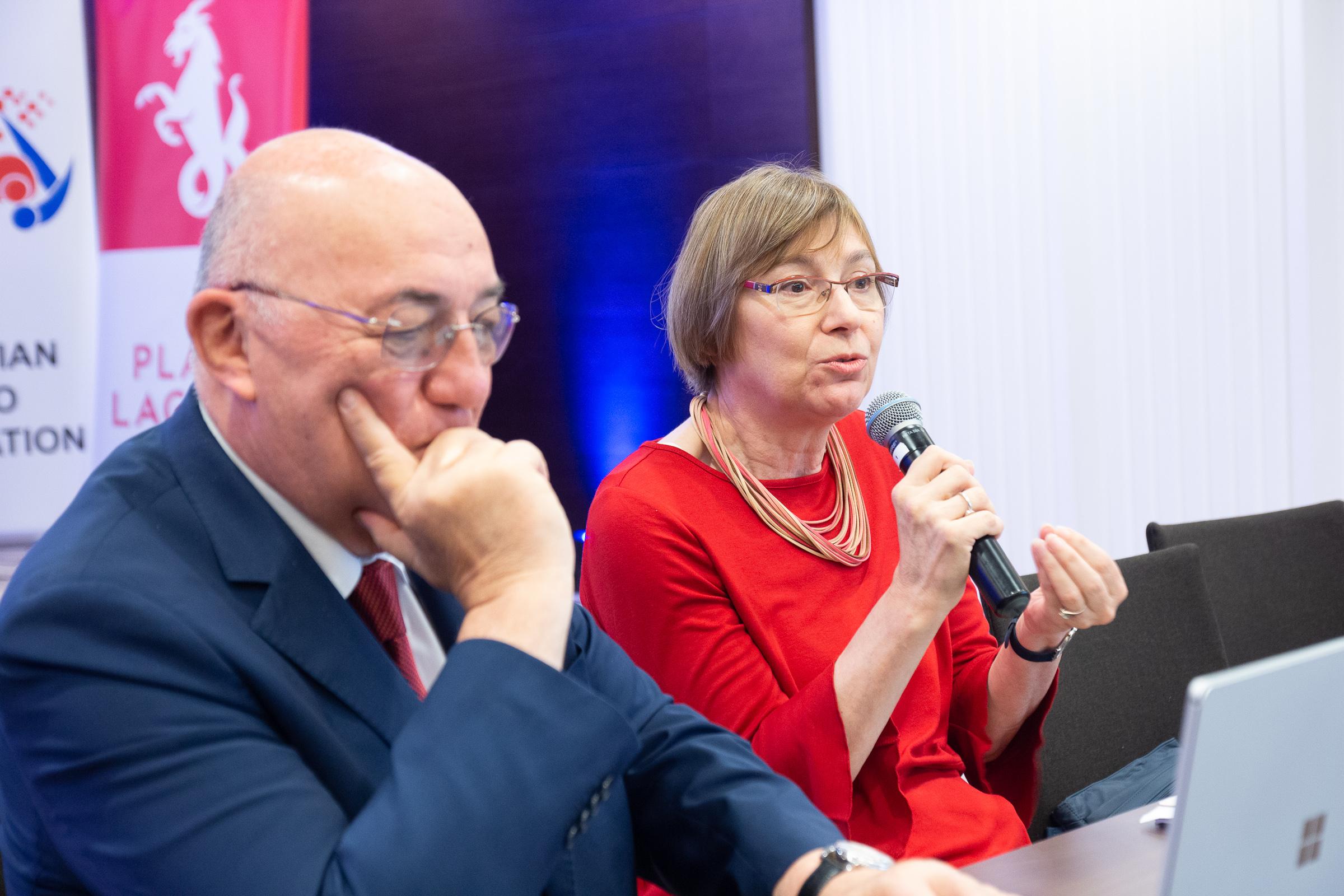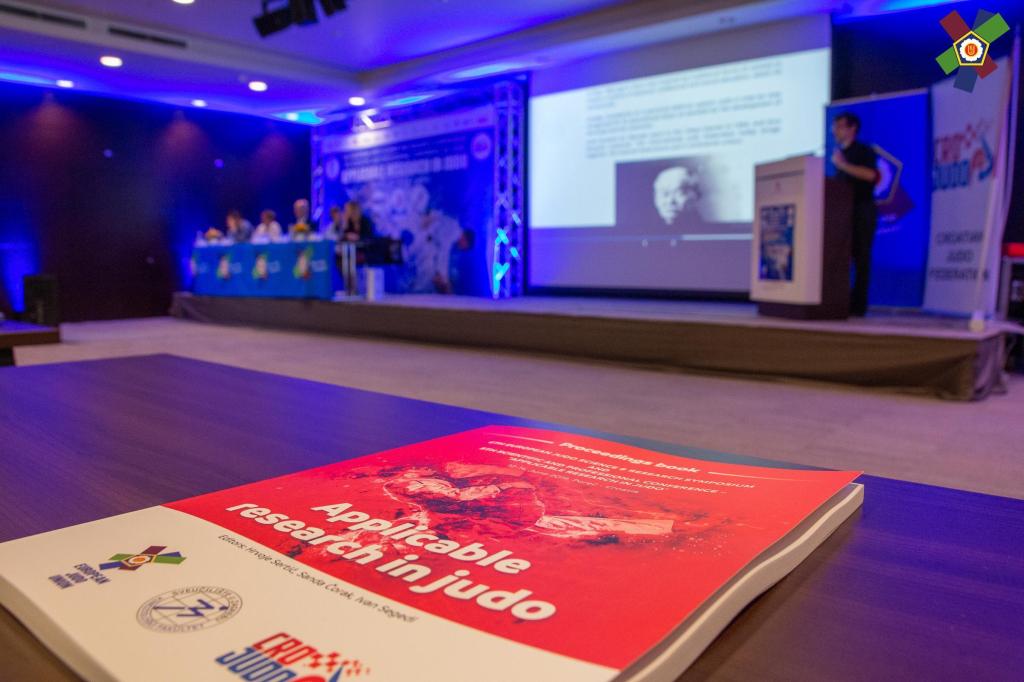During the 6th EJU Judo Festival, the city of Poreč had the honour of hosting the 6th European Judo Science and Research Symposium and the 5th Scientific and Professional Conference – ‘Applicable Research in Judo’.
For the hosts it is a pleasure to once again welcome the researchers to Poreč. To make a judo research network is important but now meeting each other, exchanging research and transferring knowledge from practitioners to researchers and vice versa is a fantastic opportunity.

Assistant Professor, Sanja ŠALAJ, PhD from the Faculty of Kinesiology in the University of Zagreb welcomed the attendees on the first morning,
This is the 5th international conference on research in judo. With 11 laboratories, we are able to close the gap between science and practice. This is dominantly scientific and I would like to congratulate the professors on this research excellence and continuity, bridging the gap. I wish you successful work, enjoyable days in Poreč and to make contacts for future collaboration.
The research presented to the group varied from psychological questions comparing the modern concept of judo to Jigaro Kano’s original idea that judo develops the human being in to a social being, to the more physiological aspects such as ACL ruptures and anthropological characteristics in relation to competitive results.

Jose MORALES conducted the first oral presentation on day two, describing his study, which was completed with Cristina CURDO and Emanuela PIERANTOZZI. An important aspect of competitive judo is the training loads assigned to individual athletes and understanding the affect of these loads as well as recovery.
It is an instrument to organise training sessions and to prevent exhausting the athletes beyond reason. Assigning a factor number to randori, uchi-komi, nage-komi or a technical session, varying weighted factor depending on the length of time each activity is, can help determine how much of a specific activity each judoka should be doing.
On the third and final day of the symposium, they held the ‘round table’ discussion. EJU Vice President Jane BRIDGE explained,
The research presentations have all been very interesting, but today we will go more in depth with how we can introduce the research to the practical side of judo.

Patrick ROUX gave the initial contribution to the ‘round table’ discussion, he expressed his goals to transmit this sort of research information and these studies to future generations of athletes.
When I became a coach, I knew of this nice judo philosophy and the principles but I wondered how we would transmit this knowledge, not just technical teaching, to the next generation. I spent a lot of time in INSEP (National Institute of Sport, Expertise, and Performance) in Paris talking to coaches from different sports. I had a memorable conversation with a Skiing expert regarding touch coaches looking for shortcuts to gold medals for young athletes. He explained to me you need to take the long, winding road, like a slalom, to use the energy, acceleration and reaction and to not take the straight shortcut because you don’t learn anything.

For the kids who had taken the shortcut, by the time they reached adult competition, it was too late for them to catch up and learn the basic skills. This is why I believe in early specialisation and cadet coaching, learning the fundamentals. We want to teach something really complex but the first step as a coach is to analyse deeply what judo is. This brings us back to the first presentation from Yves CADOT, what principles do we need to deliver and in what order of a judokas career? Do we have the capability to develop the perfect performance project? When they’re 20 years-old and ready for national team or 10 years-old when they are learning basic judo skills. This is why judo is more than sport – is it education. We create the positive environment to create elite athletes.
Chairman Hrvoje SERTIĆ added that this is why in Croatia, they encourage judo within the school environment as part of education as well as the police and military, because these principles are so important. Furthermore, there was discussion of creating a research database for the European Judo Union Website and of a scientific publication. It was argued that outside of this symposium there is a great deal of research on judo and the ability of honing what is relevant or applicable.

Croatian Judo President, Sanda Čorak, agreed and explained that within research there can be a ‘publish or perish’ mentality.
Sometimes they don’t have real time themselves to implement this research, but allows us to debate what the future of this conference is, it is important to have coaches directly involved in what we are doing
SERTIĆ discussed the results of the symposium with us when the event had concluded.
We have had consistent number for the past few years, 16 researchers as well as three keynote speakers. We hope to sustain this level of scientific study and will potentially change the set up of the conference in future years. Previously we held practical presentations here in the hotel but we are considering in the future to engage more with the practical aspect of the camp and involve coaches and athletes, after all, the conference is based on ‘Applicable Research in Judo.

The PDF of the Proceedings Book can be found below, discussing the complete studies, all of which were discussed during the symposium.
Downloads
Author: Thea Cowen




